My time owning the D800 didn’t start well. I dropped it(!) and it spent 3 weeks at Nikon having £400 worth of damage fixed, a month after it came out. But, following on from my blog post about initial thoughts on the quality of the D800 with the 600VR + 1.4x TC, here’s another quick sample of the camera with the 200-400 VR along with the usual 100% crops and a download of full resolution tifs (in both 8 & 16bit). This post is in part to help further answer a few questions I’ve had about the Nikon D800 quality for wildlife photography, but also just to give others an idea of what to expect from this combination whilst they decide if it’s right for them and if the regular D800 is the one to go for, or if the D800E is best suited with it’s ability to resolve extra detail. After all, the difference in cost between the two version of the camera isn’t to be sniffed at so an informed choice is always going to be best!
Remember, this is all based on a real world shots. Real world lighting. Real world dirt and real world weather. Also, I’m using the original 200-400, not the newer MKII.
THE SAMPLE PHOTOS, 100% CROPS AND FULL RESOLUTION DOWNLOADS
So with that, here’s a look at a couple of photos I took on the Farne Islands recently, a shag portrait taken hand held but with the camera braced on my knees as I crouched down, a puffin sitting behind a rock taken hand held but not braced, and a seal taken from a moving boat. They certainly aren’t going to win any awards but I feel they represent a relatively good cross section of how I use the 200-400 for this little test. In other words, I rarely use a tripod with it, so for me, it’s essential I can get usable images with this camera and lens without using a stable support. I’ve done nothing to the images other than convert them from a RAW to the jpegs used in the article, plus the unsharpened tifs I’ve made available for download. Why not process them up a little first? Simple, that’s your job. We all process images differently and so really, the best way to judge something is to do it yourself. Of course, better results could be gained by processing from the RAW, but I’m not making that available for obvious reason 🙂
First up, this shag portrait. Taken at 400mm, 1/100, f5, ISO 100
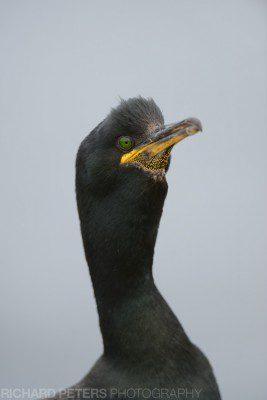
Shag Portrait
And here’s a 100% crop of the eye, both sharpened and unsharpened. Spot the photographers in the reflection!
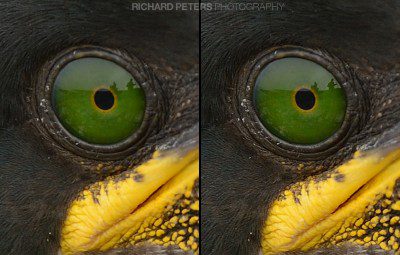
Crop of the eye, sharpened version on right
Next up we have this puffin. 400mm, 1/200, f5.6, ISO 100 (-1.3EV)
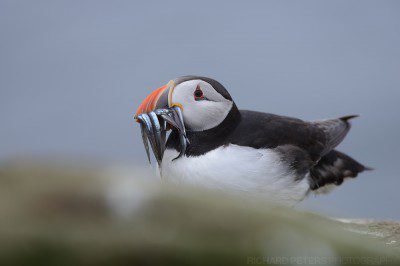
D800 with 200-400 VR
The focus point was roughly at the end of the beak closest to the eye, and I think the eye itself was probably just outside the sweet spot of the depth of field, but here’s a crop, side by without sharpening on the left, and with it on the right.
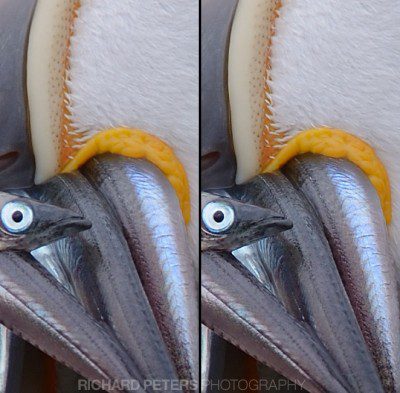
Puffin crop
This looks ok but without seeing them within the context of the entire image the full picture isn’t painted. So, please feel free to download the full resolution tif files from the following links. I’ve provided you an 8bit version and a 16bit version, but be warned, even with compression at the save stage, the 16bit file is over 260mb – so it’ll certainly test the processing power of your computer when you play around with it.
Finally, a seal, taken from a moving boat (so please excuse the framing) at 340mm, 1/640, f5, ISO 280. Never mind the camera, if ever there was a good test of MY ability this would be it. I hate boats, and this one was bobbing up and down nicely and to be honest, it’s a miracle I was able to even look through my camera long enough to take this without throwing up all over myself lol.
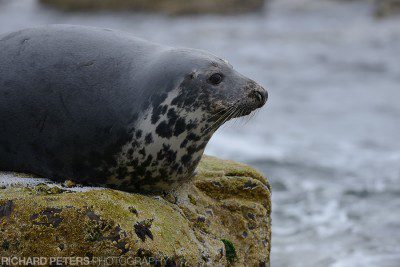
D800 and 200-400 taken from a boat
No crops here, just download the tifs as they speak for themselves with plenty of detail around the whiskers.
OTHER FIRST IMPRESSIONS
So aside from providing a couple of sample images taken with the D800 for you to download, how else am I finding it so far? Well, like I said at the top of this post, I had a little accident with the camera not long after I purchased it. So, that’s slowed me down getting to know it. But so far, the answer in short, is it’s superb! It really is a stunning camera to use and the image quality when you get it right, is extraordinary. The detail you can capture in the huge 7360 x 4912 files has to be seen to be believed. I had the chance to view some of my images on an Apple 30″ cinema display recently thanks to my good friend Austin Thomas, and both our jaws hit the floor looking at some of the images. In fact, I’d go as far as to say, although the D800 is technically my second body, I have found myself wishing a few times now that it was fast enough to keep up with the D4 as I’ve found myself wanting to reach for it first a few times.
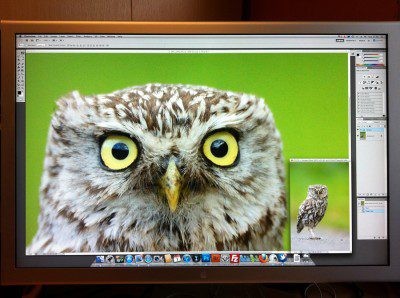
For best results, view D800 files on a large screen at full res
However, the downside to all that resolution is the speed, and I’m not just talking about the camera! Writing those huge files to even a fast 90mb/s memory card is a little time consuming, not to mention the slow 4 frames per second. It’s certainly not a deal breaker though, as there has to be a compromise somewhere and we all knew this camera would never set any speed records. That’s not it’s job. But it is worth noting that the overall speed is the one thing that I’m aware of when shooting with the D800. Also, I touched on needing the power to deal with these files, and my ageing 2009 MacBook Pro with it’s 4gig RAM was certainly starting to have issues. I’ve now picked up a new MacBook Air whilst I await the new iMacs (more on the MBA in another post) with 8gig RAM and far superior processor, and it handles the D800 files beautifully. But if your computer is looking a little old, a computer upgrade needs factoring in to your D800 purchase!
I will of course be writing a full review of the D800 in due course, but I want to really get to know the camera over time before I do so, much the same reason way that I haven’t done a full D4 review yet (although you can read a relatively in depth review I recently did for the WEX blog, here and read my other articles covering the D4 experience so far, here). But rest assured, so far so good. It’s an incredible camera and so far, I don’t regret not going for the D800E instead as I find there to be more than enough resolution to play with so far. Your opinions may vary, and I hope this post goes some way to help you decide one way or the the other which version of this incredible 36mp camera is the one for you!
WANT TO BUY?
They’ve been hard to get hold of, with very high demand of both models, but B&H Photo are a good place to try for those living in the USA. You can find The D800 here and The D800E, here.
And those of you looking to buy them in the UK, you wouldn’t go too far wrong with either:
Clifton Cameras
or
Wex Photographic.








